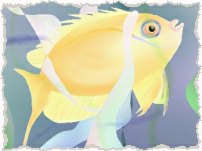Contact Juggling
Created | Updated Nov 4, 2004

See the Edited Entry on Juggling for a definition of juggling and descriptions of
numbers, technical and lazy jugglers.
Contact juggling is real magic. Simple impossibilities are performed, openly and without trickery.
Introduction
Contact juggling is one of the purest forms of technical juggling.1 It is enormously satisfying, insanely difficult, pleasantly minimalist, and depressingly unimpressive to an
audience who are unaware just how insanely difficult it is. Despite this, a good contact juggling performance looks like
magic, but without any trickery.
Equipment
Practicing in the privacy of the home can be done with any ball-like object. Only one is needed, and a normal juggling
beanbag or an orange which you don't mind bruising are ideal. Don't use a tennis ball - they're too light. This type of juggling
is prone more than most not just to drops but to uncontrollable throws across the room. For this reason, the usual juggler's
trick of practicing in front of a bed in a room with no fragile objects is recommended. (The bed is there so when a ball is
dropped, bending down is unnecessary.)
For performance, most serious contact jugglers prefer 'crystals' - perfectly spherical, hard, colourless transparent balls,
usually two or three inches in diameter. They're usually made of acetate, as this is more robust and less prone to scratches
than glass. Clear balls are preferred for a number of reasons. Manipulated properly, a crystal looks like a bubble that has
somehow frozen and attached itself to the hand. The lack of any colour or pattern means the audience can't see it rolling,
reinforcing the illusion of floating.
The basic pattern.
The basic pattern or trick in contact juggling is known as the butterfly. This consists of simply holding (say) the right
hand out to the right side of the body, palm up, as though doing half a shrug. The chosen ball rests on the palm. Now waft
the hand nonchalantly to the left in front of the face as though swatting a fly. Incredibly, the ball seems to stick to the surface
of the hand throughout, rolling smoothly along the fingers, up over the tips as the hand becomes vertical, before coming to
rest on the back of the hand as it stops, palm down, in front of the face. Now waft back. At all times the ball remains in
contact with the hand - hence 'contact' juggling. There is no trick involved, and the whole process can performed repeatedly
- the smoother the better. Audiences almost invariably assume at first that there is some sort of trickery going on, and
sometimes seem quite disappointed when it is revealed that the juggler is actually just doing precisely what they appear to be
doing. Done well, it appears almost as though the ball is doing the moving and juggler's hand follows it, rather than the other
way around.
The bad news.
The reason there are so few contact jugglers is the learning curve. Most people can be taught a three ball cascade in a
day or so. 'Eating the apple' can be achieved in a few days. Graduating to clubs (and hence fire) can be done in a week or
two. Contact juggling just the basic pattern with a single ball to a standard worth demonstrating to friends could take six
months - or more.
More patterns
There is, as might be expected, far more than just the single pattern. Gliding a ball smoothly from one hand to the other
and back is a graceful trick, and there are many variations using two or three or more balls, exchanging from hand to hand.
Many contact juggling routines incorporate elements of mime, in that the crystal can appear to have a mind of its own,
attempt to escape and so on. Other variations include rolling two balls smoothly around the palm of the hand - a trick
popularised recently by the ubiquitous 'Bao ding' balls which come with built in chimes. This can be extended to three, and
for the crowning glory, placing a fourth ball on top of the three to form a whirling pyramid.
Going further, contact juggling is possible with other props, including beach balls, trays, hoops, knives and poles. Anything
involving maintaining contact without maintaining a grip on an object could be considered contact juggling.
Where to see it.
David Bowie's character in the Jim Henson film 'Labyrinth' does some impressive contact juggling, thanks to the world's
foremost exponent of the art, Michael Moschen. A viewing of this film is strongly recommended to anyone interested in
contact juggling.
Where to learn more.
Ask a juggler. Jugglers are the opposite of magicians - they almost invariably actively want other people to know how
they do their stuff. One of the reasons is jugglers generally tend to be friendly, sharing types. Another reason is, if you try to
do what they just showed you, you appreciate even more just how hard it is!
There is an excellent book, called simply 'Contact Juggling', by James Ernest, available from good juggling shops.
and without apparent effort, contact juggling does have a great deal of artistic merit, so it's not purely technical.
